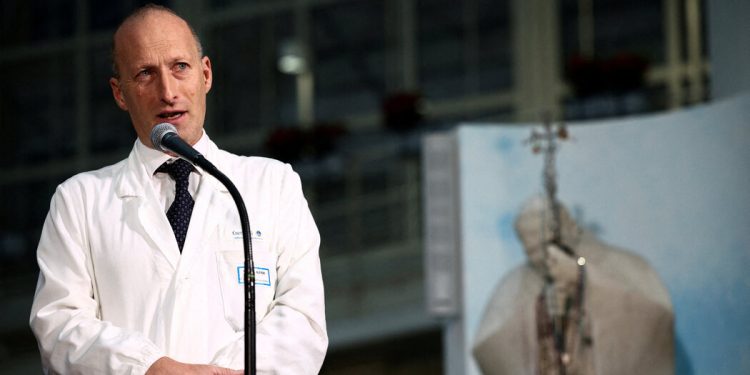The Pope’s doctors did not think he was going to do it.
“It’s terrible”, Haleta Pope Francis during a respiratory crisis last month. The pope, his hand bruised with needle bites and his oxygen saturation plunging to a dangerously low 78 during his long hospitalization, recognized in a faulty voice that he could die. He held his doctor’s hand.
Francis had excluded intubation, which would mean being kept unconscious, said the chief of the medical team, Dr. Sergio Alfieri, in an interview. His doctors therefore decided to treat pneumonia in his two lungs with a last damage dam that risked damaging his organs.
The aid closest to the Pope had tears in their eyes while the doctors asked the Pope’s personal nurse, empowered to make life or death decisions, for permission to move forward with more aggressive treatment. He consented and, finally, the Pope responded positively.
Even so, the worst had not yet passed. Less than a week later, Francis regurgitated food and started choking. The doctors, fearing to die on the spot, immediately sucked his respiratory tract but feared that inhalation aggravates his deeply infected lungs. His chief doctor feared that everything was lost.
But that was not the case.
Sunday 38 days after entering Agostino Gemelli Hospital, Dr. Alfieri returned the head of the Roman Catholic church to return to the Vatican. He implored his patient, who had resisted going to the hospital in the first place, to rest and convince himself so as not to waste the chances he had been given.
“It was a miracle that he left the hospital,” said Dr. Alfieri, adding that the Pope was no longer “in danger”.
Thank you for your patience while we check the access. If you are in reader mode, please leave and connect to your Times account, or subscribe to all time.
Thank you for your patience while we check the access.
Already subscribed? Connect.
Want all the time? Subscribe.


